Apple introduced powerful new features for sleep and hearing health, coming soon to Apple Watch and AirPods Pro 2. These updates reflect Apple’s continued focus on the development of Apple Health features and creating meaningful health tools that support users in everyday life — especially in areas that affect billions of people worldwide.
The company has been reshaping how millions engage with their personal well-being. With the release of watchOS 11, iOS 18, AirPods 4, and Apple Watch Series 10, the company has gone far beyond counting steps and calories. Today, the Apple ecosystem offers a deeply integrated set of tools spanning heart health, mental wellness, reproductive care, hearing protection, and sophisticated fitness insights — creating a comprehensive digital health companion like no other.
A Decade of Progress: Apple’s Vision for Health
When Apple entered the health space, it began with basic activity tracking on the Apple Watch. But over the years, its ambition grew, guided by collaboration with medical researchers and a deep commitment to privacy. Apple’s goal has evolved: not just to monitor, but to help users understand and improve their health. The 2024 updates represent Apple’s most comprehensive health effort yet, combining hardware, software, and research-backed insights to transform everyday wellness.
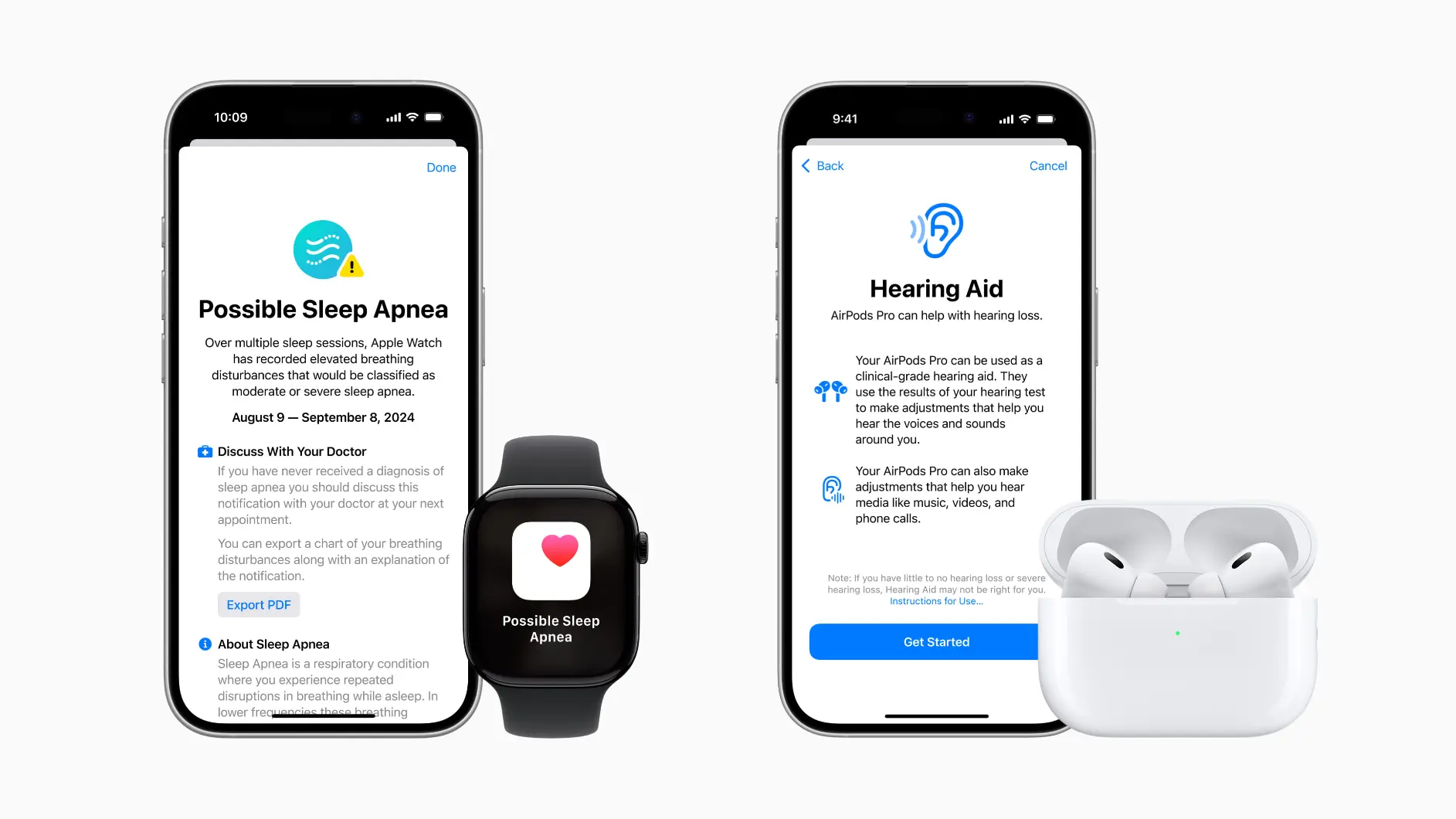
Image source: Apple
Apple Watch Series 10 + watchOS 11: The Nerve Center of Health
The Apple Watch Series 10, running watchOS 11, is central to Apple’s health strategy. More than just a fitness tracker, it’s a continuous health monitor — thanks to tools like the redesigned Vitals app, which gives you at-a-glance insights into metrics like heart rate, respiratory rate, wrist temperature, and blood oxygen levels.
But Apple didn’t stop at numbers. The Series 10 introduces Training Load, a feature that evaluates how hard your workouts push your body over time. Whether you’re a marathoner or a weekend warrior, this feature helps fine-tune recovery and performance.
One standout upgrade is Apple’s focus on mental health. With mood tracking, mindfulness reminders, and emotional state logging, watchOS 11 helps users recognize patterns between stress, sleep, exercise, and mood. This is especially powerful when combined with other data streams, turning the Apple Watch into a holistic wellness companion.
iOS 18 and the Health App: Turning Metrics Into Meaning
The Health app in iOS 18 serves as the command center for all this data. Redesigned with interactive charts and visual trends, it transforms raw numbers into actionable insights. For example, you can easily spot how your resting heart rate has changed over the past six months or track sleep improvements after adjusting your bedtime routine.
Medication tracking has also expanded. Users can log prescriptions, get reminders, and even monitor adherence — making the Health app a personal health journal. Importantly, all this data stays under your control, with end-to-end encryption and clear sharing settings.
Hearing Health with AirPods: Protecting an Overlooked Sense
Apple’s innovation extends into your ears. With the AirPods 4 and AirPods Pro 2, users now benefit from sound exposure monitoring. If your listening habits reach unsafe levels, your AirPods will notify you, helping prevent long-term hearing damage. Apple’s highlights that over a billion young people worldwide are at risk of hearing loss from unsafe listening — making this a critical, if understated, feature.
Beyond prevention, Apple’s Hearing Tests and Conversation Boost help users check and support their hearing health, blending wellness into an audio experience that was once just about entertainment.
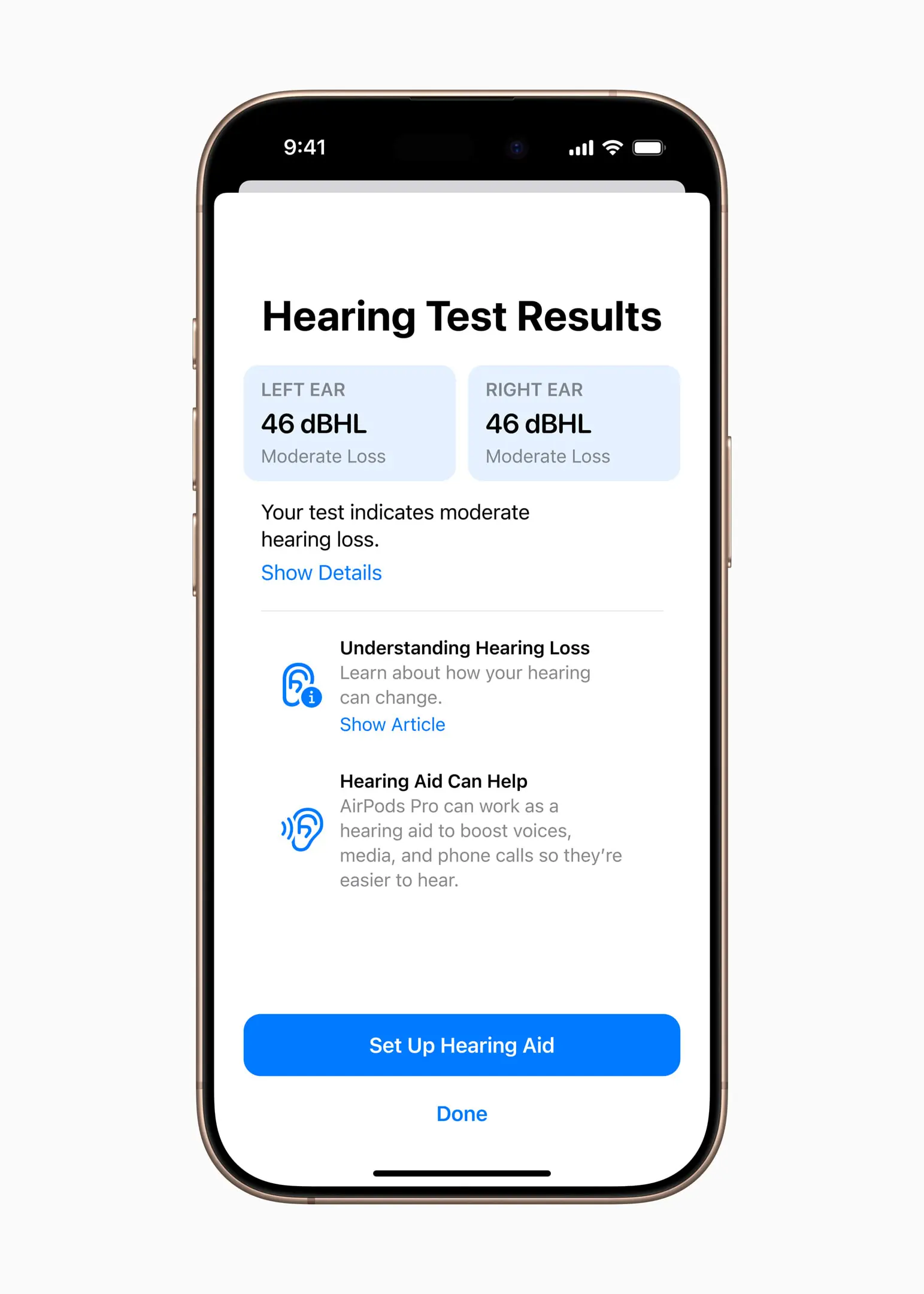
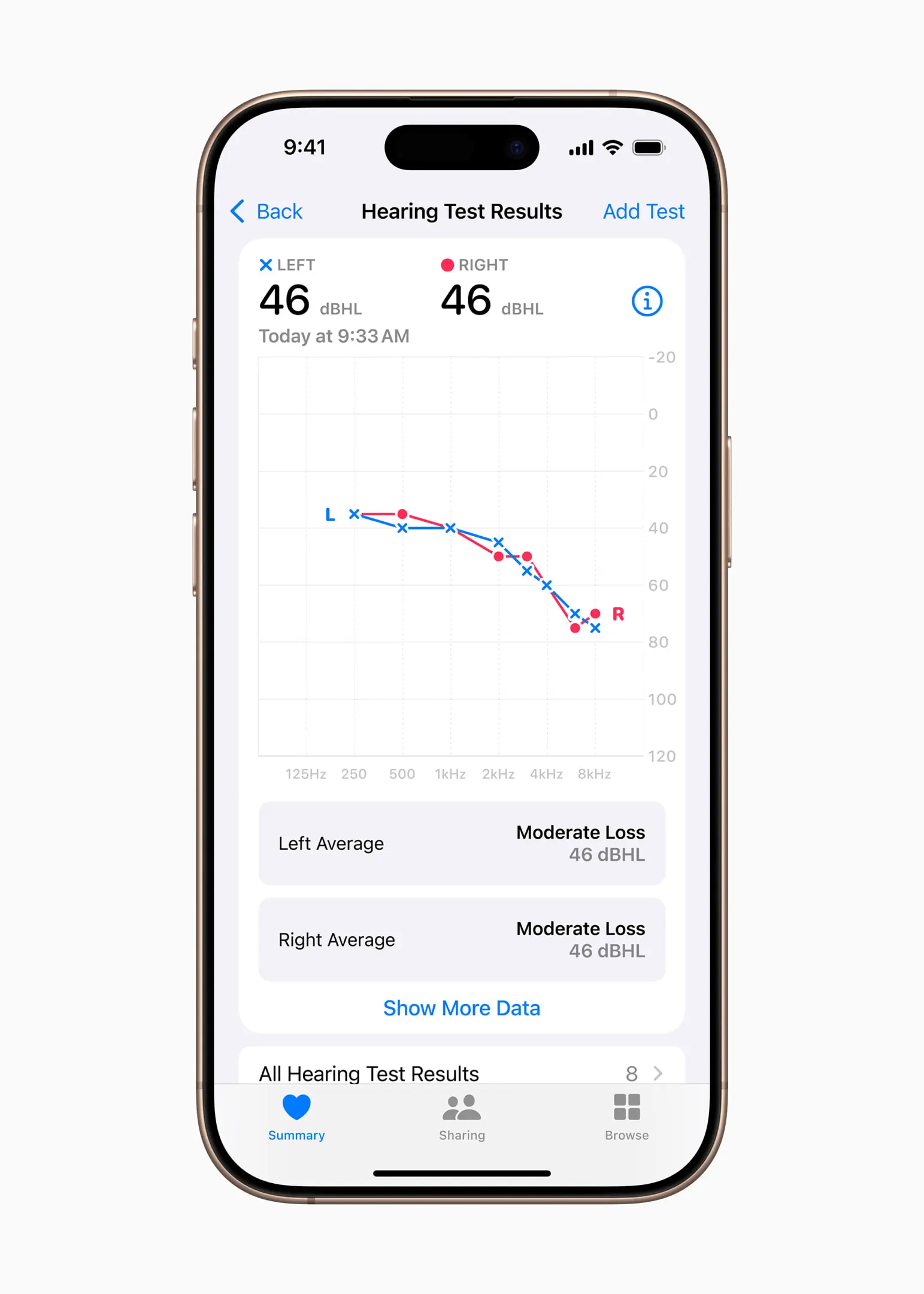
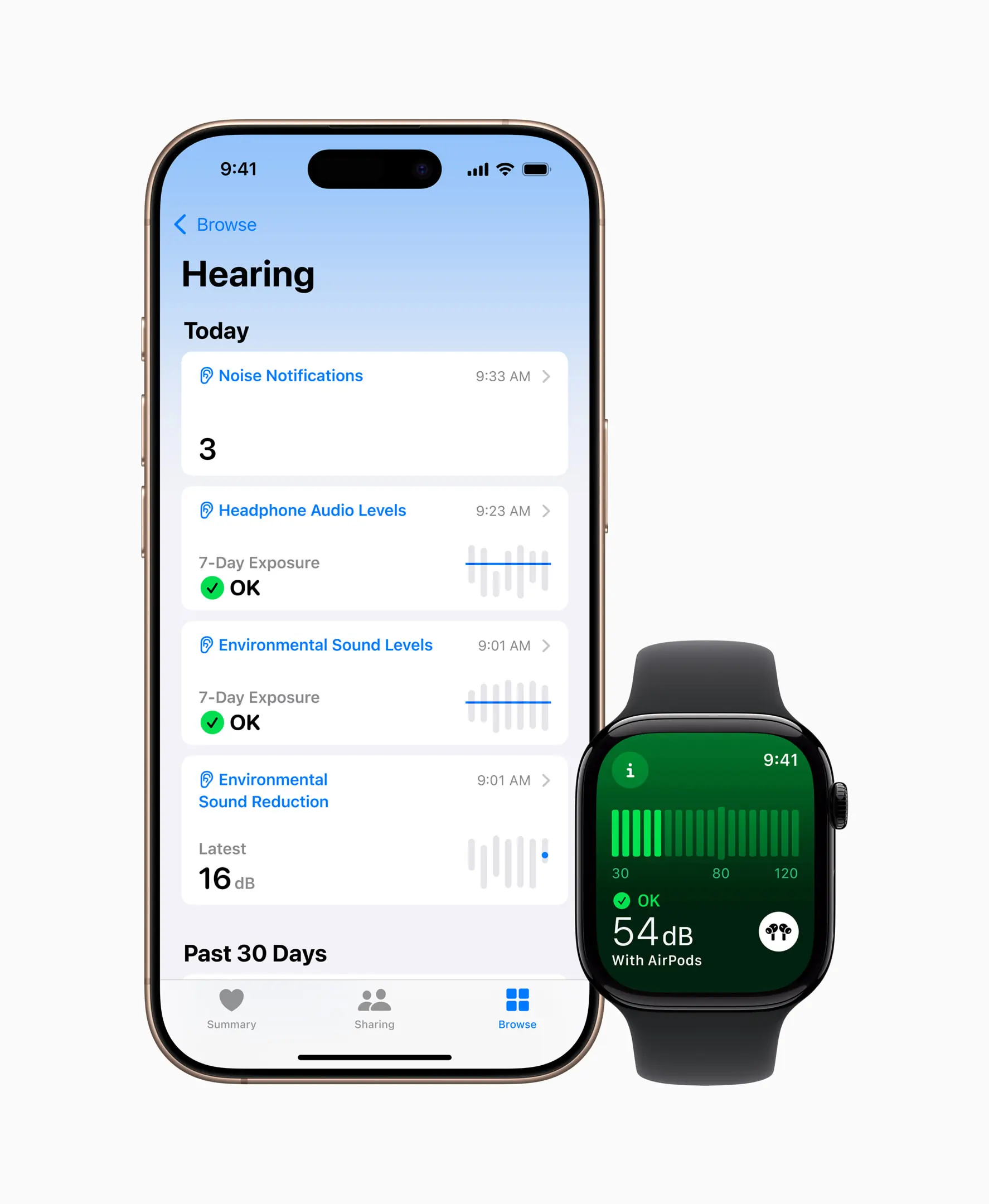
Image source: Apple
Introducing The New Sleep Apnea Detection
Sleep health is one of the most critical — and often overlooked — aspects of overall wellbeing, and Apple is taking a major step forward in this space with the introduction of sleep apnea notifications on Apple Watch.
Using a new and innovative Breathing Disturbances metric, Apple Watch will soon be able to help users identify potential signs of sleep apnea — a common but underdiagnosed condition that affects millions of people worldwide. By analyzing changes in breathing patterns during sleep over time, Apple Watch provides users with proactive insights that can lead to earlier conversations with healthcare providers and better long-term outcomes.
This feature builds on the growing capabilities of Apple Watch as a powerful tool for personal health monitoring. Already capable of tracking sleep stages, heart rate, blood oxygen levels, and more, Apple Watch now adds another layer of intelligence by using advanced sensors and machine learning to detect irregular breathing episodes that may indicate sleep apnea.
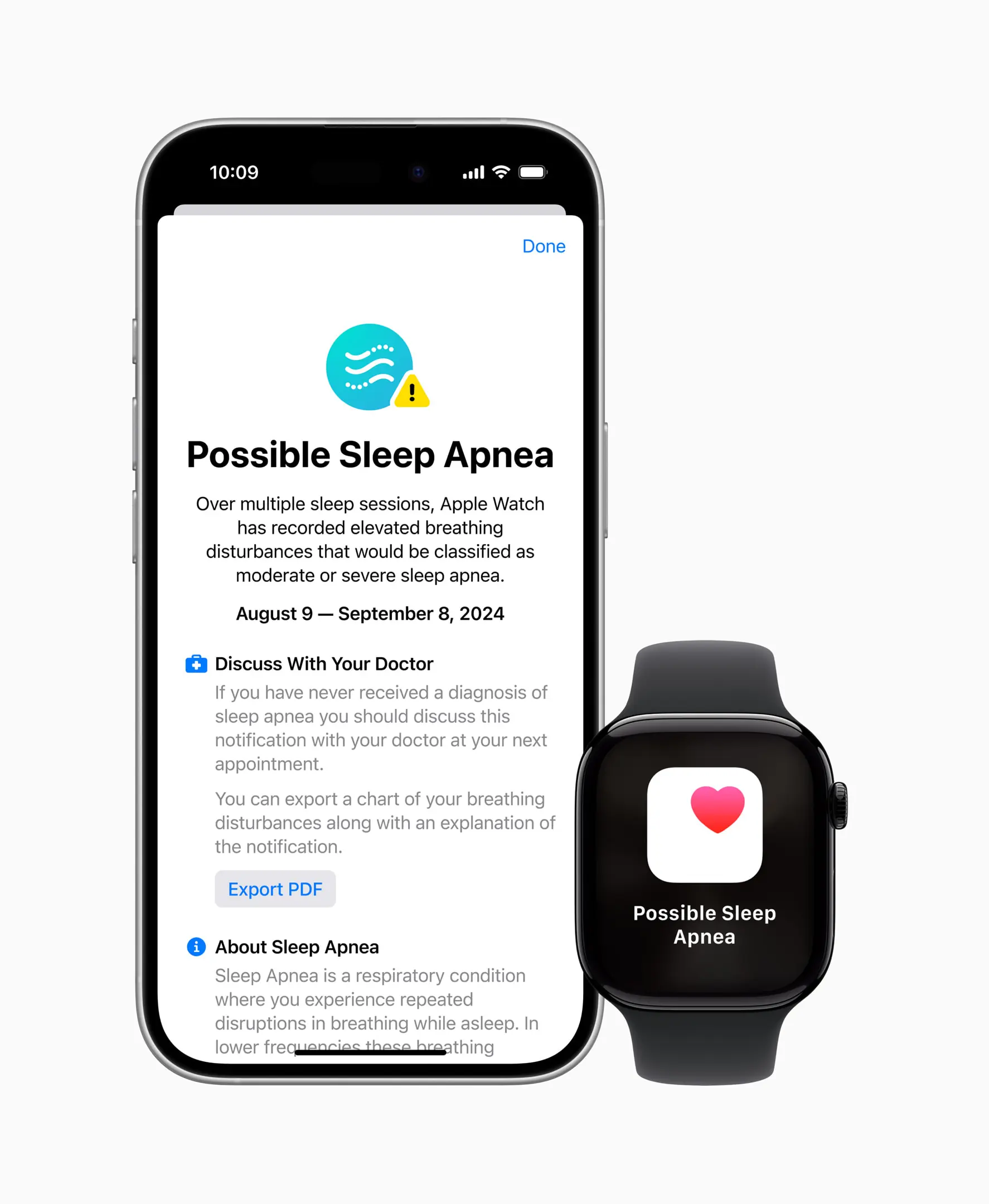
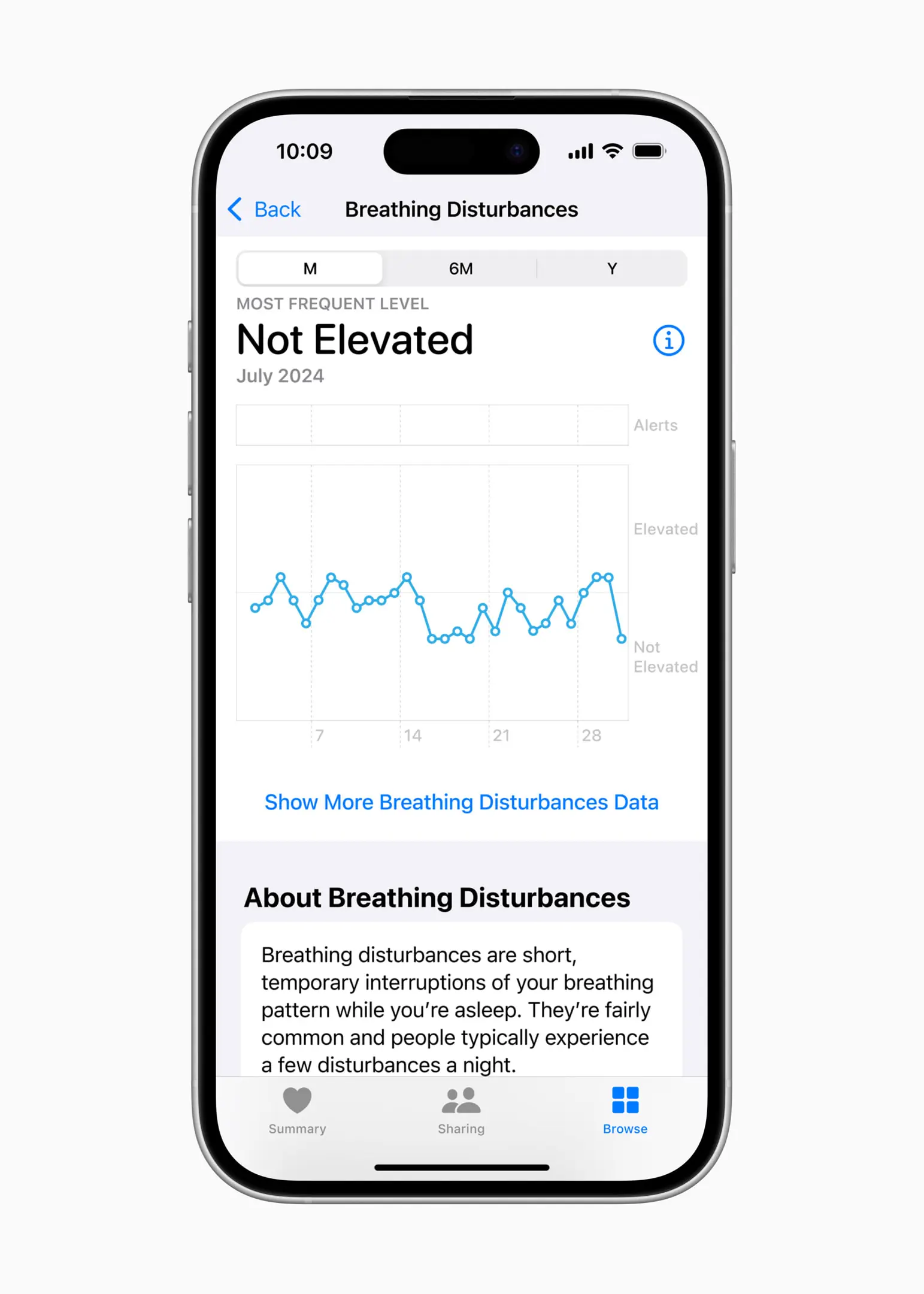
Image source: Apple
Importantly, sleep apnea notifications are expected to receive marketing authorization from the U.S. Food and Drug Administration (FDA), as well as other global health authorities. Once approved, the feature will become available later this month in over 150 countries and regions — including the United States, European Union member states, and Japan.
With this new capability, Apple continues its mission to empower users with science-backed, user-friendly health tools that fit naturally into their daily lives. By bringing sleep apnea awareness to the wrist, Apple Watch can help more people recognize the signs of a serious condition — and take meaningful steps toward better sleep and better health.
From Awareness to Empowerment In Mental Health
Mental health is a space where Apple has made deliberate, careful progress. With the ability to log daily moods, users can begin recognizing patterns: Are you consistently anxious on Sunday nights? Do your moods dip after poor sleep or improve after exercise? This kind of self-awareness can open the door to lifestyle changes or even professional support.
The Mindfulness app complements this with guided breathing exercises and reflective prompts. Apple is not trying to replace therapists but is offering entry-level tools that empower users to take the first steps in caring for their mental well-being.
A Thoughtful Focus On Reproductive Health
Apple’s Cycle Tracking tools, first introduced in 2019, have become some of the most advanced on the market. In 2024, with improved sensor integration, Apple Watch now offers retrospective ovulation estimates, leveraging heart rate and temperature data. For users trying to conceive, this is invaluable; for others, it offers a window into reproductive health more broadly.
Apple emphasizes that these tools aren’t just for fertility. They help users track symptoms, monitor irregularities, and gain a better understanding of their bodies. Combined with iOS’s secure Health app, users can choose to share this data with their doctors — or keep it private.
Data-Driven, Person-Centered Fitness
Apple’s fitness tools stand out for their blend of sophistication and simplicity. Training Load evaluates not just how much you move, but how your body responds to that movement. Combined with VO2 max readings, heart rate variability, and recovery metrics, Apple Watch delivers insights that rival sports wearables like Garmin or Polar — but in a package accessible to everyday users.
Yet, Apple hasn’t abandoned the basics. Activity Rings remain a cornerstone, offering an intuitive, motivating framework to keep users moving. They tap into behavioral science, turning fitness into a game — but a game powered by serious analytics under the hood.
Privacy: A Core Commitment
At the heart of Apple Health ecosystem is a fierce commitment to privacy. Health data is some of the most sensitive information users hold, and Apple processes much of it on-device, encrypts it end-to-end, and gives users full control over sharing. This privacy focus sets Apple apart from competitors who may monetize user health data, and it’s a major reason why healthcare institutions are increasingly willing to collaborate with Apple on research initiatives.
Why Apple Health Integrations Win
An article by The Verge emphasize that while competitors may match Apple feature-for-feature, few deliver the same seamless integration. From Watch to iPhone to AirPods, the Apple ecosystem acts as a unified whole, with each device amplifying the others.
For example, someone might use their Apple Watch to monitor heart rate during a run, log their recovery in the Health app, and check sound exposure levels from their AirPods during their cooldown walk — all without missing a beat. This synergy turns Apple’s health tools from isolated gadgets into a true wellness system.
The Future of Apple Health
Apple Health ambitions are poised to expand. Future iterations may include sensors for hydration, blood glucose, or stress hormones, transforming the Apple Watch into a full-fledged health diagnostic device. AI-driven insights may offer personalized coaching, helping users make sense of their data in new ways.
Moreover, as Apple continues partnering with healthcare institutions, we can expect more opportunities for users to contribute to (and benefit from) large-scale health studies — reinforcing the idea that Apple’s devices don’t just serve individuals, but play a role in advancing public health.
Apple’s Wellness Ecosystem in Action
Apple Health is about more than devices or features — it’s about changing how we relate to our health. Whether you’re tracking a run, monitoring your mood, logging medications, or simply protecting your hearing, Apple’s tools are designed to support, inform, and empower.
For users invested in the Apple ecosystem, the rewards are profound: a holistic, data-rich understanding of your own wellness, delivered in a way that’s intuitive and secure. And as Apple continues to innovate, it’s clear that the future of personal health is no longer confined to the doctor’s office — it’s right on your wrist, in your pocket, and even in your ears.




